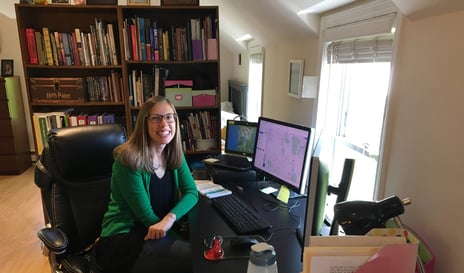What sets PACE courses apart from other noncredit offerings? Our instructional designers employ best practices in adult education and online learning to create innovative, engaging programs that are finetuned to the audience AND the content.
Here are some of our guiding principles for creating effective online learning:
![]()
Content relevance is critical for learner engagement. Adult learners, in particular, need to connect new information to existing experiences or past knowledge to engage in more effective learning.
The popularity of online training platforms like Coursera and LinkedIn Learning highlights the fact that adult learners are keen to learn skills that will promote career advancement or enable career change altogether. According to UPCEA Predictions 2024: Insights for Online and Professional Education, noncredit and alternative credentials are gaining in popularity due to rising cost of college tuition as well as private industry and governmental institutions moving away from degree requirements for entry-level positions. Noncredit programs are a great way to learn new skills quickly and affordably.
Active involvement in a learning activity translates to better, deeper understanding of the content. A mixture of interactive elements like videos, flip cards, drag-and-drop activities, interactive quizzes and more keep PACE learners engaged and excited about what they are learning.
Adult learners are busy, often juggling work and home demands. Asynchronous, online learning provides utmost convenience, allowing learners to engage in their program from wherever, whenever!
While learner constraints vary across industries or topics, our experience shows us that most working adults are willing to spend no more than three to five hours a week on a noncredit course.
Adults like choice, and self-selecting lessons or learning pathways is a great way for a learner to personalize their program. Modular programming offers a learner the chance to fill in knowledge gaps or explore areas of particular interest, which lends to better engagement, higher program completion, and overall greater satisfaction.
Credentials or proof of completion are just as important in the noncredit space as they are in degree program learning. PACE platforms facilitate the automatic release of digital certificates and digital badges.
April Ponto was unhappy in her job. She had two Masters degrees and her Chicago-based publishing job relied on her knowledge of French, ancient Greek, and ancient Hebrew, but she could barely cover her basic living expenses.
Eventually she hit a crisis point and started looking for jobs in adjacent fields and stumbled upon technical writing. She then enrolled in the Technical Writing Certificate at Oregon State University, got a new job and doubled her salary.

Oregon State University provides many instructional programs and tools available to faculty and staff.
Here are free tools that you can use anywhere in the world to help keep your students learning!
A screen recording and video editing software suite that allows users to create and record presentations and video tutorials.
A microlearning platform for creating engaging and digestible mini-lessons.
You can find free templates for Google Slides and PowerPoint.
A video platform for creating fun, and attention-grabbing videos.
Padlet is an easy way for students and teachers to post and share notes.
Infogram is an easy-to-use visualization and infographics platform.
Imgflip is a tool to animate static visual designs that can come alive and entertain.
Audacity is a a cross-platform software for recording and editing audio.
Canva is a free online graphic design platform that allows you to create presentations, posters, videos, and more..
Piktochart is an online tool for creating visual content, such as infographics, presentations, and reports with templates.
ChatGPT is a chatbot developed by OpenAI that uses artificial intelligence (AI) to create human-like conversations.
Visme is a cloud-based online tool that allows users to create, edit, store, and share visual content for presentations, infographics, and charts.